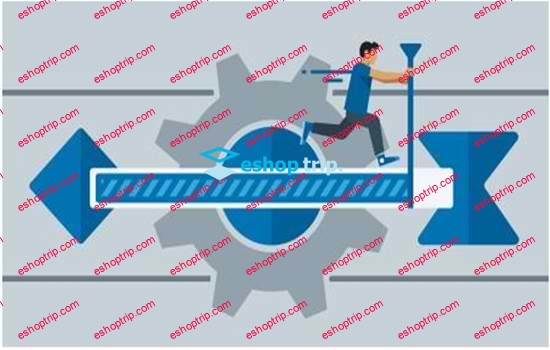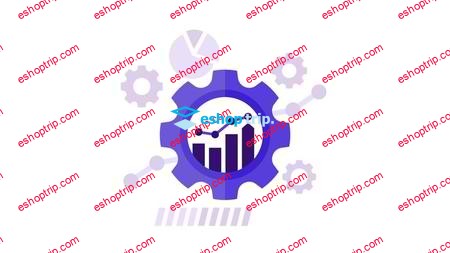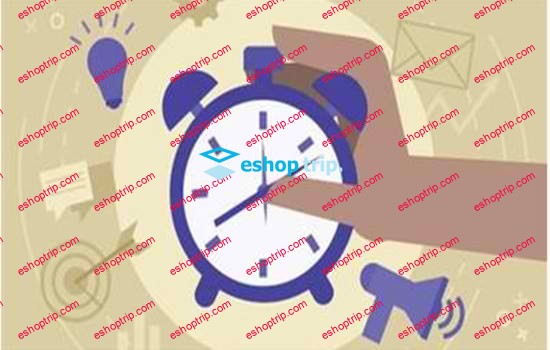Last updated 9/2024
MP4 | Video: h264, 1920×1080 | Audio: AAC, 44.1 KHz
Language: English | Size: 3.33 GB | Duration: 12h 9m
Key Business Analytics 40 + concepts like AB testing, Visual, Correlation, Scenario, Forecasting, Data mining more
What you’ll learn
You will learn the Introduction to the Key Business Analytics including the raw material – data. Business experiments/experimental design/AB testing.
Visual analytics. Correlation analysis. Scenario analysis. Forecasting or Time. Data mining. Regression analysis. Text analytics. Text analytics.
You will be able to learn Sentiment analysis. Image Analytics. Video analytics. Voice analytics.
Monte Carlo simulations. Linear programming. Cohort analysis. Factor analysis. Neural network analysis. Meta analytics literature analysis.
Learn about the details related to Qualitative surveys. Focus groups (. Interviews and ethnography.
Learn Test capture. Image capture. Sensor date. Machine data capture. Financial analytics. Customer profitability analytics. Product Profitability.
Cash flow analysis. Value driver analytics. Shareholder value analytics. Market analytics. Market size analytics.
Discover how to get the knowledge of Competitor analytics. Pricing analytics. Pricing analytics. Marketing channel. Brand analytics. Customer analytics.
Requirements
You should have an interest in Key Business Analytics and data driven management
Basic understanding of business and different requirements to run an organization
Basic communication skill and proficiency in office package
Description
DescriptionTake the next step in your career! Whether you’re an up-and-coming professional, an experienced executive, aspiring manager, budding Professional. This course is an opportunity to sharpen your Sentiment analysis. Image Analytics. Video analytics. Voice analytics. Monte Carlo simulations., increase your efficiency for professional growth and make a positive and lasting impact in the business or organization.With this course as your guide, you learn how to:All the basic functions and skills required key business analytics.Transform the Key Business Analytics including the raw material – data. Business experiments/experimental design/AB testing. Visual analytics. Correlation analysis. Scenario analysis. Forecasting or Time. Data mining. Regression analysis. Text analytics. Text analytics.Get access to recommended templates and formats for the detail’s information related to key business analytics. Learn to Qualitative surveys. Focus groups (. Interviews and ethnography. Test capture. Image capture. Sensor date. Machine data capture. Financial analytics. Customer profitability analytics. Product Profitability. are presented as with useful forms and frameworksInvest in yourself today and reap the benefits for years to comeThe Frameworks of the CourseEngaging video lectures, case studies, assessment, downloadable resources and interactive exercises. This course is created to learn the Introduction to the Key Business Analytics including the raw material – data. Business experiments/experimental design/AB testing. Visual analytics. Correlation analysis. Scenario analysis. Forecasting or Time. Data mining. Regression analysis. Text analytics. Text analytics. Sentiment analysis. Image Analytics. Video analytics. Voice analytics. Monte Carlo simulations. Linear programming. Cohort analysis. Factor analysis. Neural network analysis. Meta analytics literature analysis. Analytics inputs tools or data collection methodsThe details Test capture. Image capture. Sensor date. Machine data capture. Financial analytics. Customer profitability analytics. Product Profitability. Cash flow analysis. Value driver analytics. Shareholder value analytics. Market analytics. Market size analytics. Demand forecasting. Market trends analytics. Non- customer analytics.The course includes multiple Case studies, resources like formats-templates-worksheets-reading materials, quizzes, self-assessment, film study and assignments to nurture and upgrade your of Competitor analytics. Pricing analytics. Pricing analytics. Marketing channel. Brand analytics. Customer analytics in details.In the first part of the course, you’ll learn the details of Introduction to the Key Business Analytics including the raw material – data. Business experiments/experimental design/AB testing. Visual analytics. Correlation analysis. Scenario analysis. Forecasting or Time. Data mining. Regression analysis. Text analytics. Text analytics. Sentiment analysis. Image Analytics. Video analytics. Voice analytics. Monte Carlo simulations. Linear programming.In the middle part of the course, you’ll learn how to develop a knowledge of The , Test capture. Image capture. Sensor date. Machine data capture. Financial analytics. Customer profitability analytics. Product Profitability. Cash flow analysis. Value driver analytics. Shareholder value analytics. Market analytics. Market size analytics. Demand forecasting. Market trends analytics. Non- customer analytics.In the final part of the course, you’ll develop the Competitor analytics. Pricing analytics. Pricing analytics. Marketing channel. Brand analytics. Customer analytics. Course Content:Part 1Introduction and Study Plan· Introduction and know your Instructor· Study Plan and Structure of the Course1. Introduction1.1 Details of Introduction1.2. The raw materials -Data1.3. Data types and format1.4. How to use this 1.5. Who is this for?2. Business experiments or experimental design or AB testing2.1. What is it?2.2. What business questions is it helping me to answer2.3. Create a hypothesis2.4. Design the experiment2.5. Tips and traps3. Visual analytics4. Correlation analysis5. Scenario analysis6. Forecasting or Time7. Data mining8. Regression analysis9. Text analytics10. Sentiment analysis11. .Image Analytics12. Video analytics13. .Voice analytics14. Monte Carlo simulations15. . Linear programming16. Cohort analysis17. Factor analysis18. Neural network analysis19. Meta analytics literature analysis20. Analytics inputs tools or data collection methods21. Qualitative surveysPart 222. Focus groups23. Interviews24. Ethnography25. Test capture26. . Image capture27. Sensor date28. Machine data capture29. Financial analytics30. Customer profitability analytics31. Product Profitability32. Cash flow analysis33. Value driver analytics34. Shareholder value analytics35. Market analytics36. Market size analytics37. Demand forecasting38. Market trends analytics39. Non- customer analytics40. Competitor analytics41. Pricing analytics42. Marketing channel43. Brand analytics44. Customer analytics45. Customer lifetime
Overview
Section 1: Introduction to Key Business Analytics
Lecture 1 Introduction and Study Plan
Lecture 2 1.1. Details of Introduction
Lecture 3 1.2. The raw materials -Data
Lecture 4 1.3. Data types and format
Lecture 5 1.4. How to use this
Lecture 6 1.5. Who is this for?
Section 2: 2. Business experiments or experimental design or AB testing
Lecture 7 2.1. What is it?
Lecture 8 2.2. What business questions is it helping me to answer
Lecture 9 2.3. Create a hypothesis
Lecture 10 2.4. Design the experiment
Lecture 11 2.5. Tips and traps
Section 3: 3. Visual analytics
Lecture 12 3.1. What is it
Lecture 13 3.2. What business questions is it helping me to answer
Section 4: 4. Correlation analysis
Lecture 14 4.1 Correlation analysis
Lecture 15 4.2. What business questions is it helping me to answer
Section 5: 5. Scenario analysis
Lecture 16 5.1 Scenario analysis
Lecture 17 5.2. What business questions is it helping me to answer
Section 6: 6. Forecasting or Time
Lecture 18 6.1 Forecasting or Time
Lecture 19 6.2. What business questions is it helping me to answer
Section 7: 7. Data mining
Lecture 20 7.1 Data mining
Lecture 21 7.2. What business questions is it helping me to answer
Section 8: 8. Regression analysis
Lecture 22 8.1 Regression analysis
Lecture 23 8.2. What business questions is it helping me to answer
Section 9: 9. Text analytics
Lecture 24 9.1 Text analytics
Section 10: 10. Sentiment analysis
Lecture 25 10.1 Sentiment analysis
Section 11: 11. Image Analytics
Lecture 26 11.1 Image Analytics
Section 12: 12. Video analytics
Lecture 27 12.1 Video analytics
Lecture 28 12.2 How do I use it?
Section 13: 13. Voice analytics
Lecture 29 13.1 Voice analytics
Section 14: 14. Monte Carlo simulations
Lecture 30 14.1 Monte Carlo simulations
Section 15: 15. Linear programming
Lecture 31 15.1 Linear programming
Lecture 32 15.2 How do I use it?
Section 16: 16. Cohort analysis
Lecture 33 16.1 Cohort analysis
Section 17: 17. Factor analysis
Lecture 34 17.1 Factor analysis
Lecture 35 17.2 Tips and Traps?
Section 18: 18. Neural network analysis
Lecture 36 18.1 Neural network analysis
Lecture 37 18.2 How do I use it?
Section 19: 19. Meta analytics literature analysis
Lecture 38 19.1 Meta analytics literature analysis
Lecture 39 19.2 Tips and Traps
Section 20: 20. Analytics inputs tools or data collection methods
Lecture 40 20.1 Analytics inputs tools or data collection methods
Section 21: 21. Qualitative surveys
Lecture 41 21.1 Qualitative surveys
Section 22: 22. Focus groups
Lecture 42 22.1 Focus groups
Section 23: 23. Interviews
Lecture 43 23.1 Interviews
Section 24: 24. Ethnography
Lecture 44 24. Ethnography
Section 25: 25. Test capture
Lecture 45 25.1 Test capture
Lecture 46 25.2 How can I use it?
Section 26: 26. Image capture
Lecture 47 26.1 Image capture
Section 27: 27. Sensor date
Lecture 48 27.1 Sensor date
Lecture 49 27.2. Possible data Sources
Section 28: 28. Machine data capture
Lecture 50 28.1 Machine data capture
Lecture 51 28.2. Why does it matter
Lecture 52 28.3. How do I get started?
Section 29: 29. Financial analytics
Lecture 53 29.1 Financial analytics
Section 30: 30. Customer profitability analytics
Lecture 54 30.1 Customer profitability analytics
Lecture 55 30.2. Why does it matter?
Section 31: 31. Product Profitability
Lecture 56 31.1 Product Profitability
Lecture 57 31.2. Tips and traps
Section 32: 32. Cash flow analysis
Lecture 58 32.1 Cash flow analysis
Lecture 59 32.2. How do I use it
Section 33: 33. Value driver analytics
Lecture 60 33. Value driver analytics
Lecture 61 33.2. Why does it matter
Section 34: 34. Shareholder value analytics
Lecture 62 34.1 Shareholder value analytics
Section 35: 35. Market analytics
Lecture 63 35.1 Market analytics – Unmet need analytics
Lecture 64 35.2. Why does it matter
Lecture 65 35.3. Tips and traps
Section 36: 36. Market size analytics
Lecture 66 36.1 Market size analytics
Section 37: 37. Demand forecasting
Lecture 67 37.1 Demand forecasting
Lecture 68 37.2. How do I use it
Section 38: 38. Market trends analytics
Lecture 69 38.1 Market trends analytics
Lecture 70 38.2. Tips and traps
Section 39: 39. Non- customer analytics
Lecture 71 39.1 Non- customer analytics
Lecture 72 39.2. Why does it matter?
Section 40: 40. Competitor analytics
Lecture 73 40.1 Competitor analytics
Section 41: 41. Pricing analytics
Lecture 74 41.1 Pricing analytics
Section 42: 42. Marketing channel
Lecture 75 42.1 Marketing channel
Section 43: 43. Brand analytics
Lecture 76 43.1 Brand analytics
Section 44: 44. Customer analytics
Lecture 77 44.1 Customer analytics
Section 45: 45. Customer lifetime
Lecture 78 45.1 Customer lifetime
Lecture 79 45.2. Why does it matter?
Section 46: Assignment Part
Lecture 80 Assignment Part
Existing executive board directors, managing directors who is looking to get more engagement and innovation from their teams and organizations,Any managers or aspiring managers wants to understand business with different data analysis,Any professional wants to be a Business Analyst or Data Analyst
Homepage










